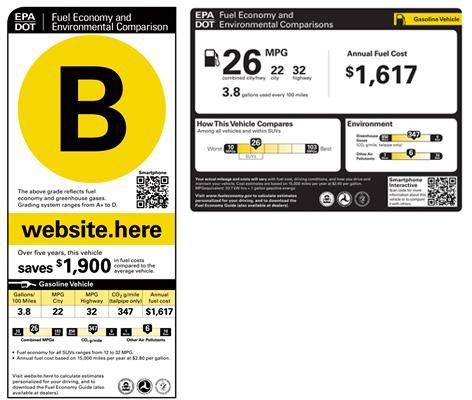
Cross posted from the Department of Transportation blog.
Together, the Department of Transportation and the Environmental Protection Agency have produced a new vehicle fuel economy label, and we want your feedback on our two proposed designs.
A year ago I blogged that putting millions more fuel-efficient cars, SUVs, and small trucks on the road is a huge step forward toward US energy independence. Well, now that the Obama Administration has taken that step forward with fuel economy standards for model years 2012 through 2016, a new generation of vehicles is hitting the market.
But, as new technologies like battery electric vehicles and plug-in hybrids have become increasingly available, fuel economy and environmental information has become increasingly complicated. Our current label just won't cut it anymore.
That's why, beginning with the 2012 model year, DOT and EPA want to use a new fuel economy label. We need a label that captures energy and emissions information in a way that helps vehicle buyers make better-informed decisions.
The problem is we've created two new labels, and we need your help to choose between them.
As EPA Administrator Lisa Jackson said, "We are asking the American people to tell us what they need to make the best economic and environmental decisions when buying a new car."
Click on the image above to learn more about the features of the proposed labels.
First let's talk about a few key features new to both proposed label designs:
- Different labels for different types of vehicle engines (plug-in hybrids, flex fuel, electric vehicles, gasoline & diesel, compressed natural gas);
- Information on CO2 tailpipe emissions;
- Fuel economy in both miles per gallon (the familiar MPG) and gallons per 100 miles, two similar-sounding factors that can tell very different stories;
- A website (also accessible by smartphone interactive code) where buyers can recalculate information based on their own driving habits.
The key difference between the two labels is that Label Option 1 prominently features a letter grade from A to F. This combines fuel economy and CO2 tailpipe emissions into a single rating. Label Option 2 retains the current label's focus on miles per gallon.
Watch a video tour of the proposed new labels on YouTube.
You can see the labels look very different from each other. And, compared with our current label, we've added a lot of new information to both options. So we really want to hear your comments, preferences, and suggestions.
There are three simple ways to let us hear from you on this in the next 60 days:
- E-mail newlabel@epa.gov directly;
- Use www.epa.gov/fueleconomy, a web-based comment tool that will submit your comment to newlabel@epa.gov; or
- Visit www.regulations.gov, where you'll want to refer to Docket ID EPA-HQ-OAR-2009-0865
- You can also mail or hand deliver a comment to EPA headquarters.
You know, this Administration is working hard to increase the number of opportunities for public participation, and DOT is happy to be jumping into that effort with both feet. So, however you do it, we really welcome your comments.
Between DOT, EPA, and you, I know we can arrive at a final design that captures important new information in a way that car buyers can use.
Ray LaHood is the Secretary of Transportation



